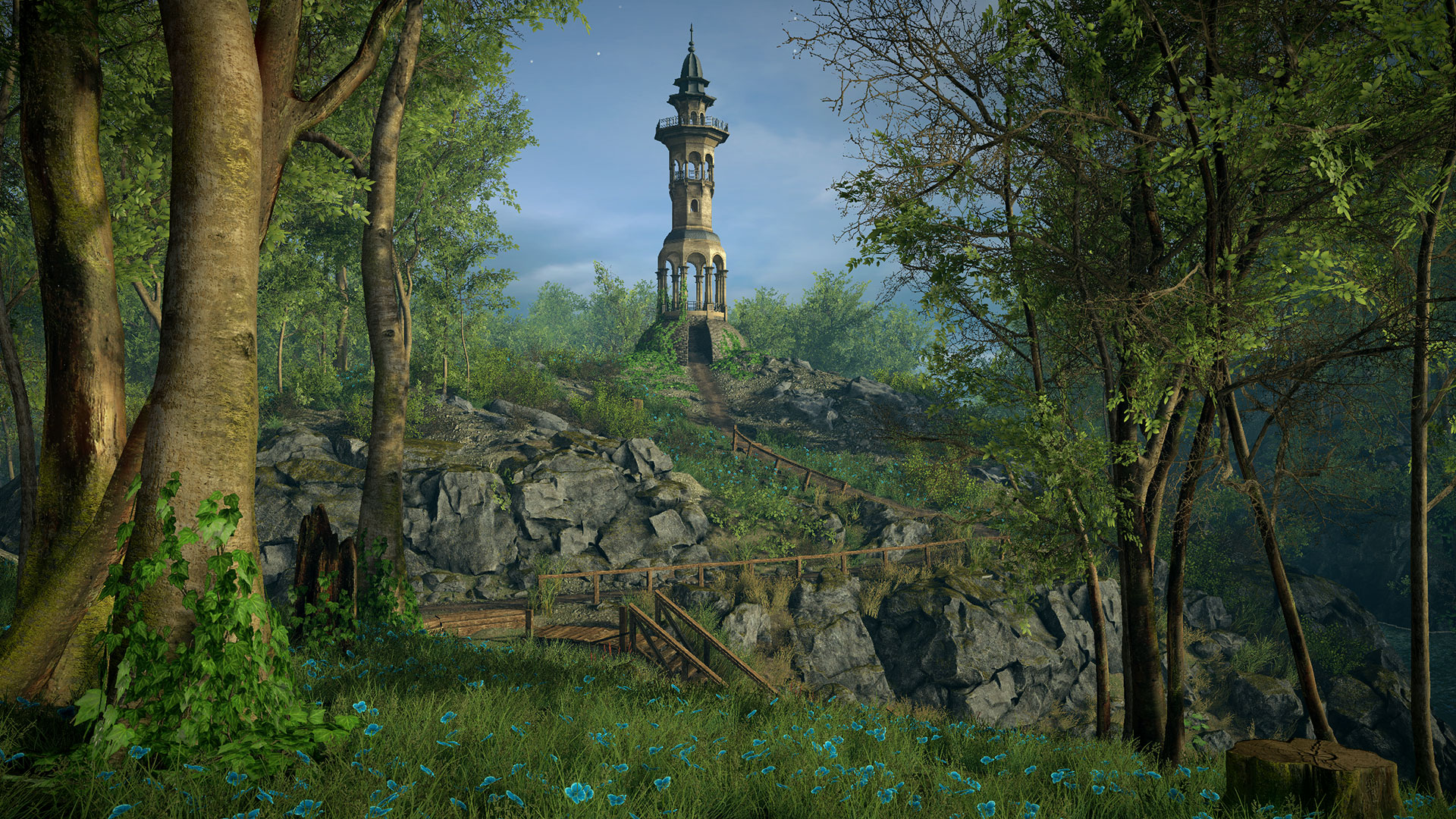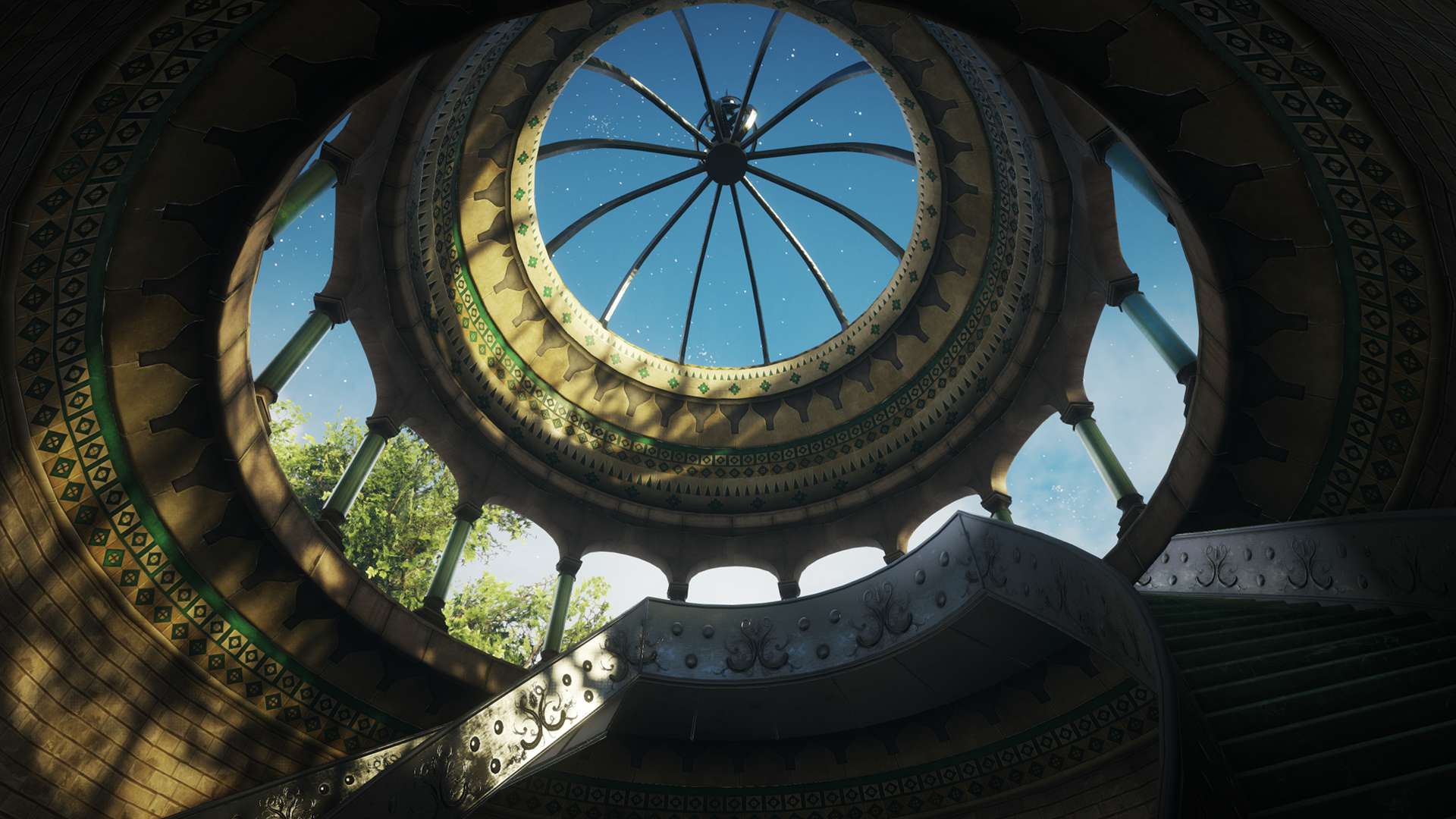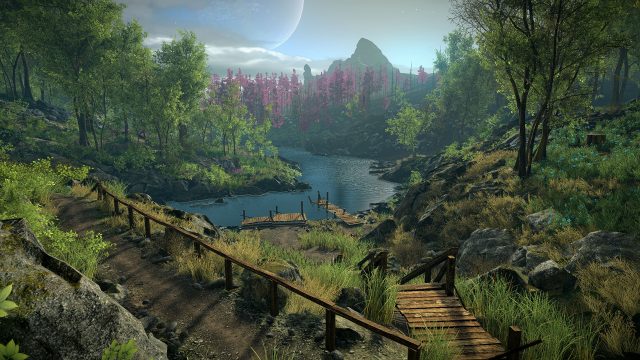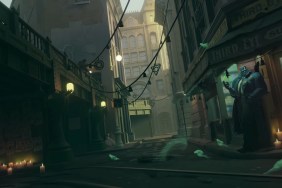Eastshade offers an tranquil alternative to the frenetic pace of modern day games. The rush of online multiplayer titles, battle royale games, and the desire to quickly complete single-player campaigns often leave little room to appreciate the games that we play. Exceptions to this rule do exist, with the indie game market being a regular supplier of these more laid back affairs. For Danny Weinbaum, Eastshade‘s developer, designing a game based on a relaxed playstyle was paramount to the design process.
“We were trying to think of a way to reward the kind of thing we wanted the player to do in Eastshade, which is basically to go slow, relax, follow their whims, and sightsee,” Weinbaum explained. “Eventually we came up with the idea to allow the player to ‘take’ paintings and create quests around the player capturing certain objects, places, colors, times of day, or a combination of those. This works in perfect harmony with wandering, because the slower the player goes, and the more they let the sense of place wash over them, the better they will do at these quests.”
Building a painter’s wonderland

These quests tie into the exploration element that Weinbaum and his team have implemented. Eastshade sees players take up the role of a travelling artist, who is tasked with exploring the island, uncovering its secrets, and painting pictures of the stunning scenery to boost their standing within the island’s community. It’s this painting mechanic which, when coupled with the extensive NPC dialogue tree options, form the basis of these quests.
“It’s not too different from a combat oriented RPG, other than the goals asked of the player is different from killing,” Weinbaum said. “The rewards given for quests tie into the loop of exploring and painting rather than killing. Different dialogue options will cause certain quests to play out differently, resulting in potentially different objectives for the player, narrative outcomes, or in some cases different rewards at the end.”
Eastshade’s painting mechanic could have been laborious, especially for players who might not be the most artistically gifted people out there. Its design from a photography viewpoint was a more palatable alternative than forcing players to spend hours waving a paintbrush around on screen. The inclusion of an RPG-esque resource functionality also prevents players from taking advantage of painting too many pictures, and ensures that exploration plays as much of a key role as your easel, paints, and brush do.
“The painting is very much like a photo, but with extra data,” Weinbaum revealed. “Special objects, places, people, and time of day are recorded, so the game knows certain things about the painting. You can paint whatever you like, provided you have the materials for a canvas, and enough ‘inspiration.’ Inspiration is a resource in the game you get by finding new places, reading books, and drinking tea. So when an NPC asks for something like a painting of a chicken, the player has to go find a chicken to paint, and ensure they have the resources necessary. If they don’t, maybe they need to explore some more, find some more books or perhaps purchase some tea.”
Design, develop, repeat

As a former AAA environment artist, Weinbaum’s experience in this game development area shines through in the world he has created. It’s a factor that he attributes to how inspiring the real world is, and why it’s necessary to find the beauty in everything we see.
“I see my background in environment art as the very base for the game itself,” he divulged. “The world-first approach was a direct result of my love and ability to make the forests, mountains, cities, and more. I think how the world looks is the reason people care about the game. I’m inspired by all variety of settings — it could be the bustle of a market, or the quiet of a forest, or even the clamor of a coffee shop. I just love the senses that come with being somewhere, and we try to capture some of that in our games.”
Eastshade’s development was far from plain sailing though. Bugs that took days to resolve contributed significantly to the game’s five-year development cycle, while a beta version distributed to streamers flagged other issues that needed to be fixed. To ensure that other problems, such as textures and poly count, weren’t detrimental to work flow, Weinbaum developed a unique script in-house — the Unity hex grid script — to help move development along.
“Its purpose is to consolidate draw calls [how many objects are drawn to the screen],” Weinbaum explained. “A typical LOD [level of detail] will reduce poly count, but all the objects are still separate, so it does nothing for draw calls. I group all the objects in the world by locality — we happen to use a hex shape because it is rounder than a square — and combine the LOD1s and LOD2s. It makes culling more inaccurate, and creates more overdraw, but for our game it has been the backbone of our optimization strategy.”
Inspiring people through Eastshade‘s world

There were real world rules that Eastshade’s team looked to follow more closely from a design perspective too. The architecture on show, juxtaposed against the game’s natural setting, needed to be as attractive as its surroundings without straying too far from the structures that inspired their design.
“There are certain rules I’ve tried to keep in mind, like not mixing arch styles, and following the rules of believability in terms of weight of materials, like not making the first floor wood and second floor stone,” Weinbaum noted. “I myself particularly love round things in architecture, whether that comes in the form of dome roofs, round doorways, or even the entire structure being spherical. I also looked to Middle Eastern architecture, with its prominent domes and Roman-esque arches, particularly for Nava, our big city.”
Developing a game like Eastshade, at a time when the natural world is under pressure from human-made problems, could be construed as a call-to-arms to protect our planet. It’s a situation that Weinbaum said he appreciates, but doesn’t feel that Eastshade will make a huge difference in raising environmental awareness. What he hopes people take away instead is an admiration of our world, to be enchanted by it, and use it to inspire their own lives.
“We certainly hope Eastshade leaves people feeling more excited about the real world,” he said, “whether that manifests in desire to travel, interest in a subject, or inspiration for their own creative passions.”







